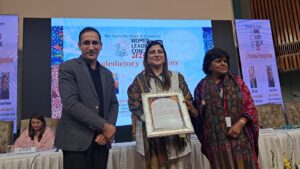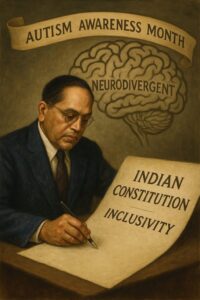The Rising Tide of Domestic Violence Against Women in Kashmir
By Farzana Mumtaz
Domestic violence is enemy of humanity.
In recent years, Jammu and Kashmir has witnessed a troubling surge in domestic violence cases against women, reflecting deep-seated societal challenges and the lingering impacts of prolonged conflict.
Escalating Incidents and Underreporting
Data from the National Crime Records Bureau (NCRB) indicates a consistent rise in crimes against women in the region, with approximately 12,000 cases reported over the past three years. These include molestation, rape, domestic violence, and abduction. However, experts suggest that the actual numbers are likely higher due to underreporting, as many victims remain silent owing to societal pressures and stigma .
Support Mechanisms and Their Challenges
To address this crisis, the government has established One Stop Centres (OSCs) across Jammu and Kashmir. These centers offer immediate assistance, including medical care, legal advice, police support, mental health counseling, and short-term shelter. Over the past three years, more than 6,400 women have sought help through these centers .
Additionally, the ‘Violence-Free Home – A Woman’s Right’ initiative, launched in 2021, set up special cells within police stations to provide psycho-social-legal support to victims. However, the future of these cells is uncertain, as their funding is set to end, prompting the Jammu and Kashmir government to request an extension from the National Commission for Women .
Societal and Cultural Barriers
Cultural norms and societal expectations often deter women from reporting domestic violence. Stigma, fear of retaliation, and the perception of domestic issues as private matters contribute to the silence surrounding these crimes. Moreover, the ongoing conflict in the region exacerbates these challenges, as issues like domestic violence are often overshadowed by larger socio-political crises .
The Plight of ‘Half-Widows’
The conflict has also given rise to the phenomenon of ‘half-widows’—women whose husbands have disappeared but are not officially declared dead. These women face legal and social challenges, including difficulties in claiming property rights and accessing government assistance. They often live in precarious conditions, facing economic hardships and social ostracization .
Mental Health Implications
The psychological toll of domestic violence is profound. Depression, anxiety, and post-traumatic stress disorder are common among victims. A 2019 study by Médecins Sans Frontières revealed alarming rates of mental health disorders among women in Kashmir, with domestic violence being a significant contributing factor .
The Way Forward
Addressing domestic violence in Kashmir requires a multifaceted approach:
- Strengthening Legal Frameworks: Ensuring the effective implementation of the Protection of Women from Domestic Violence Act, 2005, and holding perpetrators accountable.
- Enhancing Support Services: Sustaining and expanding initiatives like OSCs and special cells to provide comprehensive support to victims.
- Community Engagement: Raising awareness to challenge societal norms that perpetuate silence and stigma around domestic violence.
- Mental Health Support: Integrating mental health services into support mechanisms for victims to address the psychological impact of abuse.
By acknowledging and confronting the multifaceted nature of domestic violence in Kashmir, stakeholders can work towards creating a safer and more equitable environment for women in the region.
The rise in domestic violence against women in Kashmir is not merely a statistic—it reflects a deep and persistent crisis rooted in cultural norms, conflict-related trauma, and systemic gaps in protection and support. While efforts like One Stop Centres and legal reforms mark progress, they are not enough in isolation. Sustainable change requires a holistic approach that combines legal enforcement, social awareness, mental health support, and economic empowerment of women. Most importantly, the silence surrounding domestic violence must be broken—by society, by institutions, and by individuals—so that no woman in Kashmir has to endure abuse in silence. Empowering women and addressing the root causes of gender-based violence is essential not just for the safety of individuals, but for the peace and progress of the entire region.
 ithout Direction: The Employment Drought in Jammu and Kashmir
ithout Direction: The Employment Drought in Jammu and Kashmir



